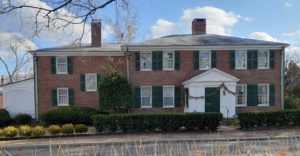Our Year Asking “Who Are Cambridge Women?”
By Marieke Van Damme
Read at the Opening Conversation and Annual Meeting on February 25, 2020
Hello everyone and welcome to the Cambridge Historical Society’s annual Opening Conversation. I’m Marieke Van Damme, executive director. Before we begin, I would like to say thank you to our friends at the Cambridge Public Library for hosting us tonight, and for CCTV for filming tonight’s conversation. I also want to acknowledge that we are on the traditional territory of the Massachusett people.
How many Cambridge Historical Society members are here tonight? Thank you and welcome!
I’m pleased to see all of you here tonight, familiar faces and new ones, as we kick off another year of programming. Throughout 2020, we are asking, “Who Are Cambridge Women?”
As you recall, several years ago we decided to tackle issues that Cambridge is facing today and offer a historical perspective. We vowed to be timely, to be relevant, and to be students of curiosity and inquiry. We want to help Cambridge “think like historians.” And I believe we have more than succeeded.
You’ll be hearing more about the behind the scenes work of the Society at the Annual Meeting portion of tonight’s event, which will immediately follow our speakers. I hope you stick around for the short presentation.
So, Who Are Cambridge Women?
A couple of weeks ago, during a Communications Committee meeting there was a suggestion that we all wear white to this event, as a nod to the white outfits often worn by suffragists as they fought for the right to vote. You might have seen this play out during the recent State of the Union. Seeing all those elected officials, all women, in white, contrasted against so many black suits with flag pins. It’s a powerful statement.
We quickly dismissed the idea, though. We decided to not wear white. Because of the asterisk.
I probably don’t need to tell anyone living in New England Patriot’s Nation the power of the asterisk. While a tiny symbol, it sends a big message. It says there’s been an omission. It says there is more to the story; “read on.” “There are subtleties here, and context you shouldn’t ignore.”
The 19th amendment, the one that prohibits the government from denying the right to vote to citizens of the United States on the basis of sex, has a big asterisk. In short, the fight for women’s voting rights prioritized middle class, privileged white women, women like me, and disregarded those of immigrant women and women of color. The repercussions of this are still with us. It’s a complicated, ugly history. One that doesn’t always get told, but should. Sure I would love to break out a white pantsuit and visibly celebrate the 19th amendment, but how can I represent that asterisk?
Here at the Society, we’ve found one way. We’ve turned that asterisk into a question mark. It’s subtle, but it makes a difference. Have you noticed how this year’s theme, indeed, all of our annual themes, are questions? This year we are asking, “Who Are Cambridge Women?” instead of “A Celebration of Cambridge women” or even “the Year of Cambridge Women.” Last year we asked, “How Does Cambridge Engage?” instead of a theme of “Cambridge Activists” or “Making Change in Cambridge.”
Yes, we phrase the year as a question because we aren’t the experts telling you what to think about a topic, and we invite your participation and curiosity. But we’re also putting in the asterisk. The question mark asks, “What do you think has been left out?”
All year long we plan to explore that asterisk around women’s history here in Cambridge. Whether it is the lives of Loyalist women in the years leading up the American Revolution or the subtle influences of female-centric design on architecture. We’ll be talking about the work of women—be it providing care, earning money, filling in gaps that the patriarchy has ignored, or all of the above. We’ll give examples of extraordinary women in the fields of education, science, creative arts, and our civic lives. It is going to be a great year no Cantabrigian should miss.
Now before you say, “Hey, what about so-and-so, and so-and-so. You’re leaving out some great women!” I will say, YES. I know! We *are* leaving out a lot of people and that pains us. But we are a small organization, with only one full-time staff member and two part-time, and we simply cannot cover as much ground as we would like every year. That said, I’m pleased to introduce our call for submissions for our new initiative, “How Have Women Shaped Cambridge?” More details will be coming to your inbox next week, but in the meantime, think about an amazing woman you know, or wish you knew, and consider writing up a short essay about her life and accomplishments. This is but one way we can all help contribute to the written history of Cambridge women whose stories might otherwise be lost to time.
Thank you again for coming tonight, and for joining us on this year’s adventure. Again, I hope that if you value what you learn tonight and all year long, you’ll consider supporting us with a gift, or perhaps joining us on a committee. You belong here and you are welcome here. The history of Cambridge is incomplete without you.






